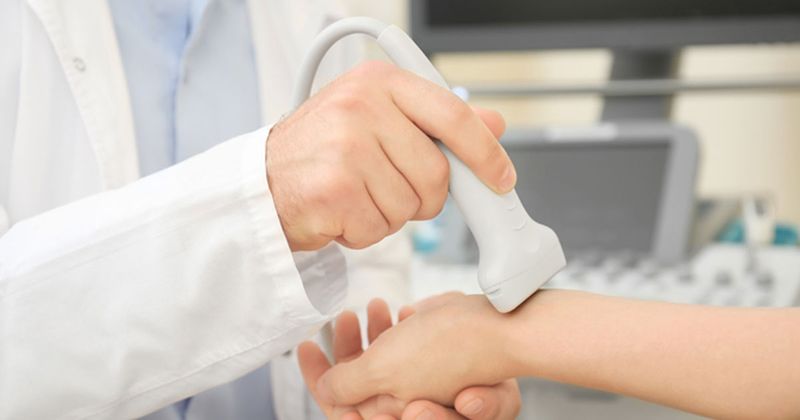Imaging, functional tests can help ‘tease out’ fast vs slow myositis progressors
SAN DIEGO — Imaging and symptom rating scales offer physicians ample opportunity to follow patients with suspected myositis and “tease out” fast vs. slow progressors, noted a speaker at the 2023 Congress of Clinical Rheumatology West.
According to Lisa Christopher-Stine, MD, MPH, director of the Johns Hopkins Myositis Center, the accessibility of ultrasound testing makes the technique a reliable surveillance method for surrogate markers of muscular inflammation.

“Why is it good? Well, it is in your office and is portable,” she told attendees. “It is much less expensive than MRI.”
Physicians can also use ultrasound to detect inclusion body myositis by performing imaging and analysis on the deep finger flexors.
“Ultrasound of the deep finger flexors helps discriminate patients with inclusion body myositis from other myositis subtypes,” Christopher-Stine said. “The FDP ultrasound really is a nice clinical marker for early advancing inclusion body myositis.”
Muscle echo intensity may additionally offer more viability as a surrogate marker in non-inclusion body myositis and inflammatory myopathies, Christopher-Stine said. However, among patients with long-standing inclusion body myositis, detecting and interpreting increased muscle echo intensity is more difficult, she added.
“Muscle echo intensity may be a useful surrogate marker for muscle inflammation,” Christopher-Stine said.
MRI, meanwhile, is useful in evaluating and following patients presenting with edema.
“Edema, fatty replacement and atrophy can all be assessed on MRI and then followed longitudinally, non-invasively, especially if your exam is unclear and you cannot tell if the patient is truly getting better based on other factors,” Christopher-Stine said. "The MRI can be a very strong biomarker for you. Edema alone is not always inflammatory.
“Do remember that muscle denervation can be the cause of muscle edema,” she added. “Don’t ever let a radiologist tell you that somebody has myositis just by looking at the scan.”
Meanwhile, making proper use of the inclusion body myositis functional rating scale (IBMFRS) can help rheumatologists determine whether patients are deteriorating.
“This is a scale that is readily available — you can use it in your clinic,” Christopher-Stine said. “It is a nice diagnostic follow-up for patients and for you.”
The IBMFRS includes 10 items, where patients rank their functional ability from 0 through four for each item.
“Your top score is 40, and that is essentially not affected by inclusion body myositis,” Christopher-Stine said.
The scale includes assessments of basic functional skills such as swallowing, handwriting, getting dressed, the ability to perform basic hygiene habits, walking and climbing stairs.
“I just give this to you as an example, if you don’t know what to follow with your inclusion body myositis patients,” Christopher-Stine said. “Following them functionally is very helpful. I think this is going to help us tease out who are the fast progressors and who are the slower progressors, and what that means.”

